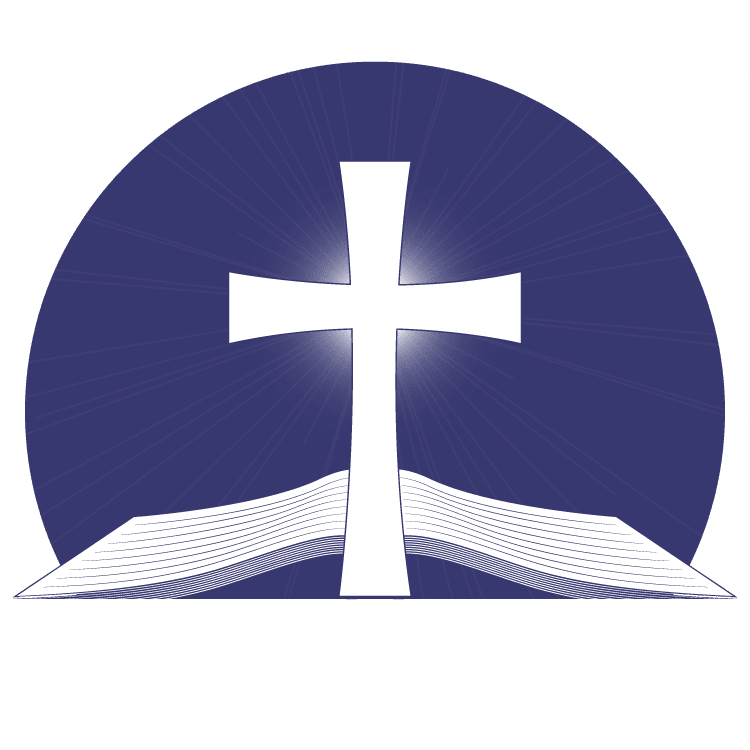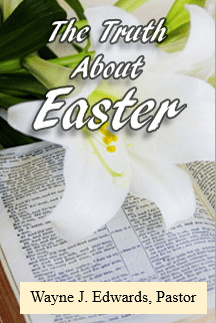|
|
“I declare to you the gospel which I preached to you, which also you received and in which you stand, by which also you are saved, if you hold fast that word which I preached to you, unless you believed in vain. For I delivered to you first of all that which I also received: that Christ died for our sins according to the Scriptures, and that He was buried, and that He rose again the third day according to the Scriptures.” 1 Corinthians 15:1-4
|
Christians celebrate the day referred to as “Easter” to recognize Jesus’ death, burial, and resurrection. It is a time of rejoicing and thanksgiving, for we know Christ’s resurrection from the grave is the monumental event in all of human history and the basis for our faith in Jesus Christ as our Savior and Lord. As the Apostle Paul said, “If Christ be not raised, your faith is in vain; ye are yet in your sins.” (1 Corinthians 15:17)
The first-century church recognized the significance of the resurrection by moving the day of Christian worship from the Jewish Sabbath to Sunday, which was/is the first day of the week. In Acts 20:7, Luke said those who believed Jesus Christ was the Messiah gathered on the first day of the week for the purpose of breaking of bread, for fellowship with each other, and for the worship of Jesus Christ as their Savior. According to the Jewish calendar they gathered sometime after 6:00 PM on Saturday, which coincides with the time of the Lord’s resurrection from the grave.
In Revelation 1:10, written 70 years after the resurrection, the Apostle John said he was in the Spirit on “The Lord’s Day.” By the end of the 1st century, Sunday was accepted as the day for Christians to assemble and celebrate the resurrection of Christ.
Then, a great discussion arose on the date Christians should set aside each year to celebrate the Lord’s resurrection. Some wanted to continue to connect it to the dates of the annual Jewish Feasts, and rightfully so, because that is when Jesus fulfilled the first four of the seven feasts: Passover, Unleavened Bread, First Fruits, and the Feast of Weeks. However, since the Jewish Feasts follow the Lunar calendar, the dates of those events would shift from year to year, i.e., this year, it is Aprill 12- April 20. So, in 325 A.D., Bishops met in the City of Nicaea and decided, since Sunday was the Day Christians assembled together for worship, all churches should celebrate the Lord’s resurrection on the Sunday following the full moon after the equinox of March 20; i.e., the first day of spring.
That very unwise decision diminished the spiritual significance of the resurrection. Over time, the celebration became more important than the resurrection, which is why the Lord’s resurrection is connected to an event called “Easter.”
“Ishtar”, was the name of an Anglo-Saxon goddess of spring. “Astarte,” “Ashtoreth” was the false goddess of fertility who was worshipped by the pagans in Mesopotamia and Syria. The Easter symbols originated in the pagan spring festivals held in Europe, Egypt, and the Middle East, where “Pantheism” or the worship of nature as God still exists. The “rabbit” or “hare” was a symbol of sexual pleasure and fertility, and the Babylonians believed a giant “Egg” fell from heaven into the Euphrates River, and the goddess of Astarte was hatched. So, connecting the celebration of Ishtar – the rebirth of nature, with hares or rabbits – the symbol of fertility, we have the origin of the Easter Bunny that “lays chocolate eggs!” Rather than correct the commercialization of the Lord’s resurrection, the Council of Nicaea decided to add these man-made customs, which are now considered as traditions that are equal to the Scriptures:
- Lent – the 40-day season of prayer, urging Christian to annually repent of their sins in preparation for the celebration of the Lord’s resurrection. However, Christians are to practice continual repentance.
- Palm Sunday, remembering the day Jesus rode into Jerusalem on a donkey and given the reception of a King. However, this historical event occurred on their Sabbath Day, which would be on Saturday.
- Maundy-Thursday, or Holy Thursday, drawing attention to the night of the Lord’s last supper with His disciples. However, this event had to occur on Wednesday evening, for Thursday was the Day of Passover.
- Good Friday, declaring that Jesus was crucified on “Good Friday”, laid in the tomb Friday evening, and arose from the grave at sunrise on Sunday morning. However, there are not three days and three nights from Friday to Sunday morning.
In Matthew 12:38, the Scribes and Pharisees indicated that they were willing to believe Jesus was the Messiah, if He would give them a sufficient sign. But, in Matthew 12:39-40, Jesus said to them: “For as Jonah was three days and three nights in the belly of the great fish, so will the Son of Man be three days and three nights in the heart of the earth.”
Jonah was in a whale’s belly three days and three nights, and then spewed out on dry land to be the first missionary to the Gentiles of Ninevah. Jonah’s experience with that whale was a “type,” an illustration of the death, burial, and resurrection of Jesus Christ, for as Jonah was in the whale’s belly for 72 hours, so was Jesus in the heart of the earth, for 72 hours, and regardless of how you add it up, even using a part of a day as a whole day, you can’t get 72 hours from Friday evening to Sunday morning.
- Sunrise Service – a pre-dawn worship service to celebrate the very moment of the Lord’s resurrection. However, in Genesis 10:9-10, the Bible speaks of a mighty hunter named Nimrod, who was associated with the Tower of Babel. Nimrod became like a god-man to the people. Perhaps because of the jealousy between them, Nimrod was killed by Esau, another great hunter. His body was cut into pieces and sent throughout his kingdom. However, “his mother and wife, Semiramis,” told the people that Nimrod had ascended to the sun and was now called Baal, the sun god. This is where the worship of the sun, moon, stars, and heavenly bodies came from. So, for thousands of years, pagans have assembled in the dark of the night to catch the first glimpse of the annual return of Nimrod on the first day of spring. For the last 2,000 years, Christians have gathered before dawn to catch the first rays of the sun, to worship the resurrection of Jesus Christ – equating Nimrod and Christ – the sun god and the Son of God.
- Many other pagan symbols and practices associated with Easter are embraced by most churches. However, the Easter holiday is the most disturbing to me, as it parallels Nimrod, Tammuz, and Ishtar with God the Father, God the Son, and God the Holy Spirit. Nowhere in the scriptures are eggs or rabbits connected with Jesus’ death, burial, and resurrection, nor does the scripture suggest that we should celebrate at sunrise Christ’s resurrection. All those traditions are of pagan origin, which gives homage to Satan, and yet churches around the world are already preparing for the massive crowds who will attend these annual services.
- In Matthew 15:8-9, Jesus told His disciples, “This people honor me with their lips, but their heart is far from me; in vain do they worship me, teaching as doctrines the commandments of men.’” Believing in and following man-made traditions and customs, regardless of our intentions, is nothing more than a religious activity to soothe our guilty conscience for not fully surrendering our lives unto the Lordship of Christ.

